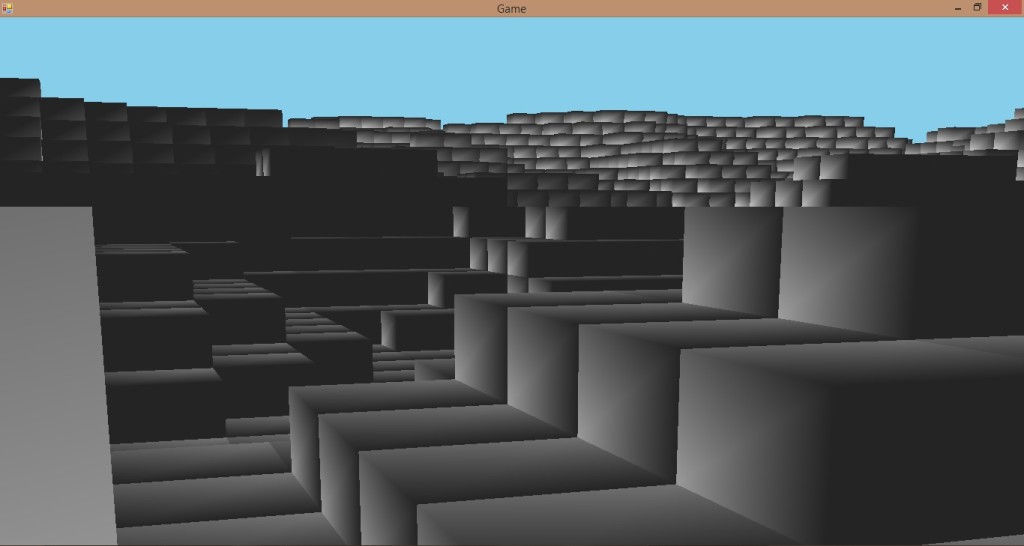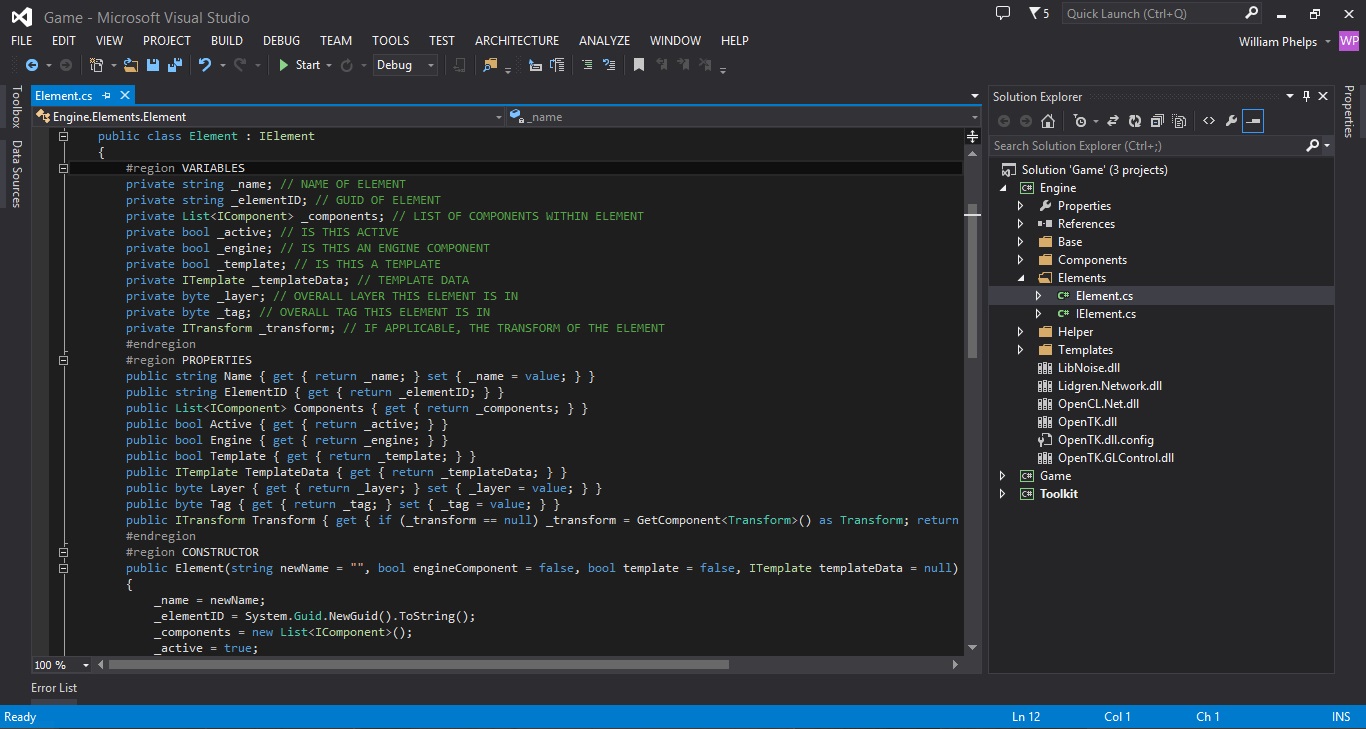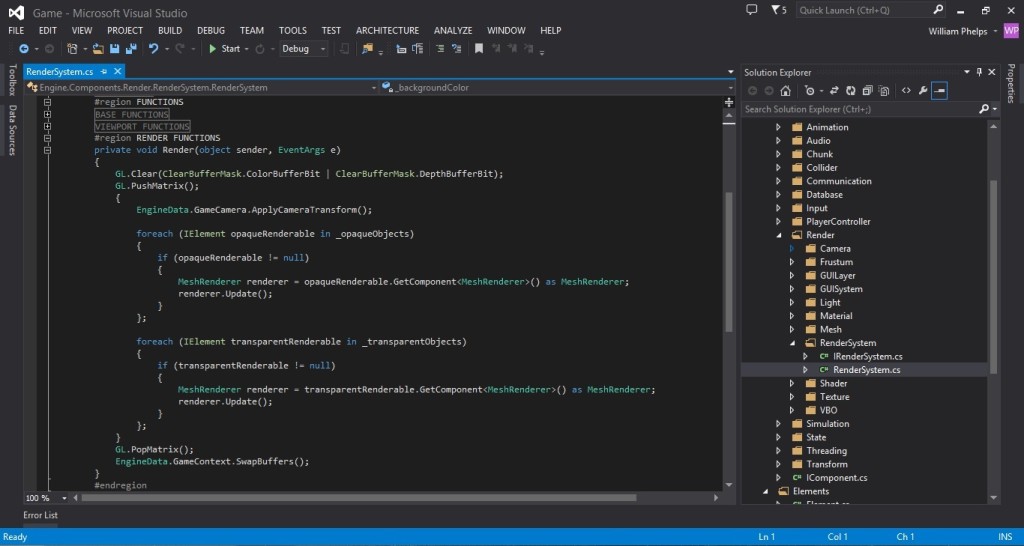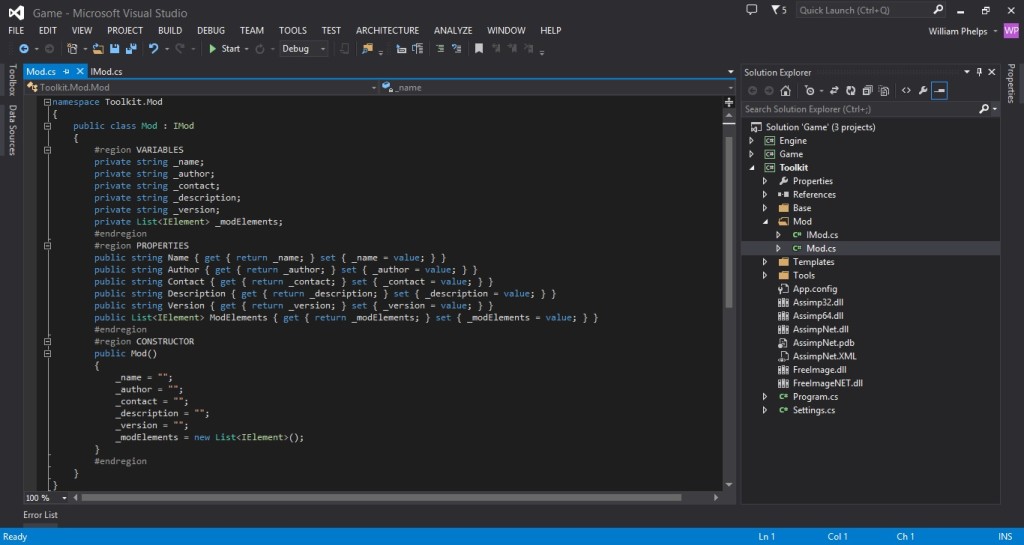We have made some good progress on the game engine and toolkit. Today’s monthly update will break down what we have accomplished.
Build
This is an older build. We were testing out blocks and chunks for terrain generation. Some of this code has been migrated over to the new build, and we should have the base engine functionality up and running in the near future to get this content rendering again. While its hard to show, this also includes player controls to move around the area, and an infinite chunk loading system (which we will not be using in the game as the planet faces will be finite).
Code
Our main focus with the game has been getting communication, input and rendering functioning in January. This gives us the basic buildings blocks to expand the rest of the engine and toolkit. Once this foundation is set, we can begin working on game logic.
Game
The basic building block for our game is an “Element” which is used to hold various pieces of data for the game. An Element can contain Components which hold specialized code for various segments of the game (such as a mesh and material to show something on the screen, or a town manager). Elements can also contain Templates output from Imaginator which hold the raw assets and data that the game draws from.
A major focus this month has been the rendering system. This is broken into multiple components seen on the right such as the Camera (allowing the player to actually see something), Frustum (determining what is actually in the camera), GUI (the way for the player to interact with the game), Light (it illuminates), Material (combines parameters, shaders, and textures to define how something looks in the game), Mesh (allows a mesh to render in the game), and RenderSystem (the actual engine that renders objects to the screen).
Toolkit
This is a preliminary breakdown of the base data for each mod within the Imaginator. The game itself will be controlled through a master mod, and all other mods would derive from this (unless they are completely unique). The information plugged in above (name, author, etc.) would be read when an author uploads their mod to the database. From there, the mod database would allow the author to customize a specialized page to market the mod, communicate with users, and gain ratings when a user is in the mod database within the game.
Showing a few of the tools that have been designed so far (with stock assets added in that do not reflect anything from our game). Mesh Editor uses the AssImp library to allow nearly all mesh types to be supported. We are utilizing Collada (DAE) for our game. The mesh editor itself will mainly be used for characters, with all other creations being built from various sized blocks within the Prefab Editor. Texture Editor uses the FreeImage library to allow nearly all image types to be supported. We are utilizing PNG for our game.
Design
There has been a lot of pondering on how the Stone Age cultures will work, however we feel we have only scratched the surface, especially since we could not reach any final conclusion regarding the types of structures that should be present.
In short:
- Buildings – While a list of buildings has been made, we have explored the possibility of a more dynamic system where NPC houses become a workshop (for example) and they obtain the necessary tools and experience over time to perform their professions better.
- Resources and their Effects – We have started making a list of different resources and how they may be used in the Stone Age build. Different types of wood, stone, obsidian, and their effects on weapons durability and other possible statistics.
- Weapons and “Armor” – While still at an early stage we have been going slightly into the types of clothing, armor and weapons that might be in the game at this stage.
- Dialogues – Some early work has begun on dialogues, and anything that comes with them, such as rumor generation. Ex: “NPC-Player and NPC-NPC interaction will add a bit of life to the player’s day-to-day. These may also act as a source of quests or exploration, especially when some interesting rumor is overheard.“
- Missions/Events/Flags – While I did not start putting them down on paper, we have been pondering on how these missions may be generated, based on local and global variables. Ex: “Capture
- Animals – When a specific type of animal is spotted by a farmer, he may be unable to capture it in any easy way. He may ask the player (or applicable NPC) to capture animals and bring them back to him. To start he may ask for only one animal, just to “study” it, or he may ask the player to bring one male and one female, in order to start breeding his own.“
Art

Early rendition of the main Imaginator dock (still very much a Work In Progress). This will be centered at the top of the screen and contains 32 x 32 icons for each tool within the toolkit. The dock can be collapsed to open more screen real estate, and contains tabs for each grouping of tools for easy access. Fatih is still working his art magic to get the remaining graphics in, and will then focus on the first few tools we’ve built for the rendering system.
We’ve focused on the toolkit initially over game assets mainly to get our development pipeline as smooth as possible for the team. Once this step is completed, Fatih has 500+ tickets related to game assets that he’ll be working through for the next 4 months.
For February…and beyond
The goal right now is to finalize the first pass of the game engine and toolkit. Once this is accomplished, we can begin shifting to game logic. February’s focus is the engine and toolkit, with March shifting to planet generation, terrain manipulation, player controls and interaction, and the first batch of assets. April is focused solely on AI and cultures. May rounds up how various entities can progress (i.e. the player with inventory and skills). And June finalizes the rest of the features needed for the early access build including structure generation (constructing meaningful buildings, tools, vehicles, and weapons), the final assets, and everything necessary to launch the build.
- The Imagine Nations Team
Help support the Imagine Nations Campaign







Just found out about this game. Why haven't I seen this before!?
I am not sure why. I hope your interested!